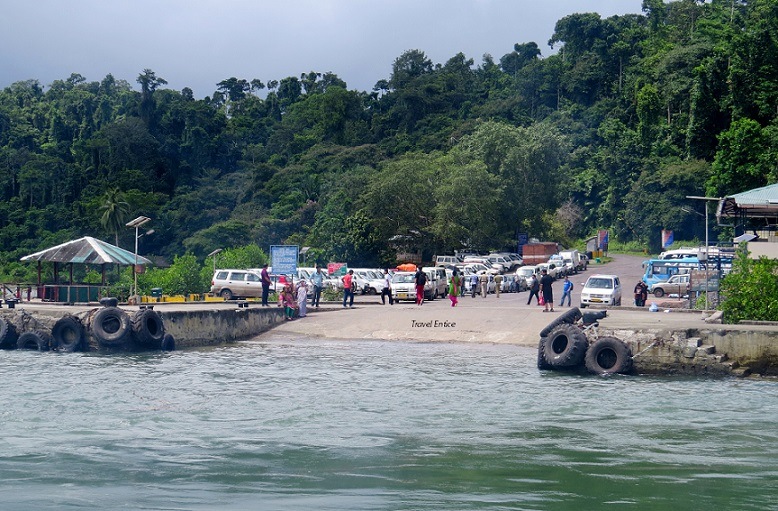
Baratang Island
Baratang Island, nestled between the Middle and South Andaman Islands, is a must-visit destination for travelers exploring the Andaman and Nicobar Islands. Located about 110 km from Port Blair, the island is a top attraction for tourists seeking adventure. The journey to Baratang is often described as thrilling, starting early in the morning and spanning several hours. In our “How to Reach Baratang” section, we provide detailed insights into the unique route that adds to the excitement of visiting this enchanting island.
The Andaman Islands are renowned for their pristine beaches, azure waters, and golden sands, making them a dream destination for travelers. However, adding Baratang Island to your itinerary unveils a captivating green side of the Andamans. Baratang offers a unique experience, being home to the indigenous Jarawa tribes, who are the primary inhabitants, along with a small community of Ranchi settlers. This lush island promises a fascinating blend of natural beauty and cultural richness for those seeking to explore beyond the beaches.
Baratang Island is famed for its stunning natural wonders, including the Limestone Caves and the intriguing Mud Volcano. Another hidden gem worth exploring is Parrot Island, a serene haven for bird enthusiasts. To visit Parrot Island, however, an overnight stay at Baratang is necessary. Stay tuned as we provide detailed insights into reaching these captivating attractions in the upcoming sections of this article.
What to Expect When Visiting Baratang Island?
Baratang Island promises a unique blend of adventure, natural beauty, and cultural experiences. Visitors can explore breathtaking attractions like the Limestone Caves, the bubbling Mud Volcano, and the serene Parrot Island. Along the way, you’ll pass through lush forests and encounter the indigenous Jarawa tribes, offering a glimpse into the region’s rich heritage. Baratang is a perfect destination for travelers seeking to discover the lesser-known yet captivating side of the Andaman Islands.
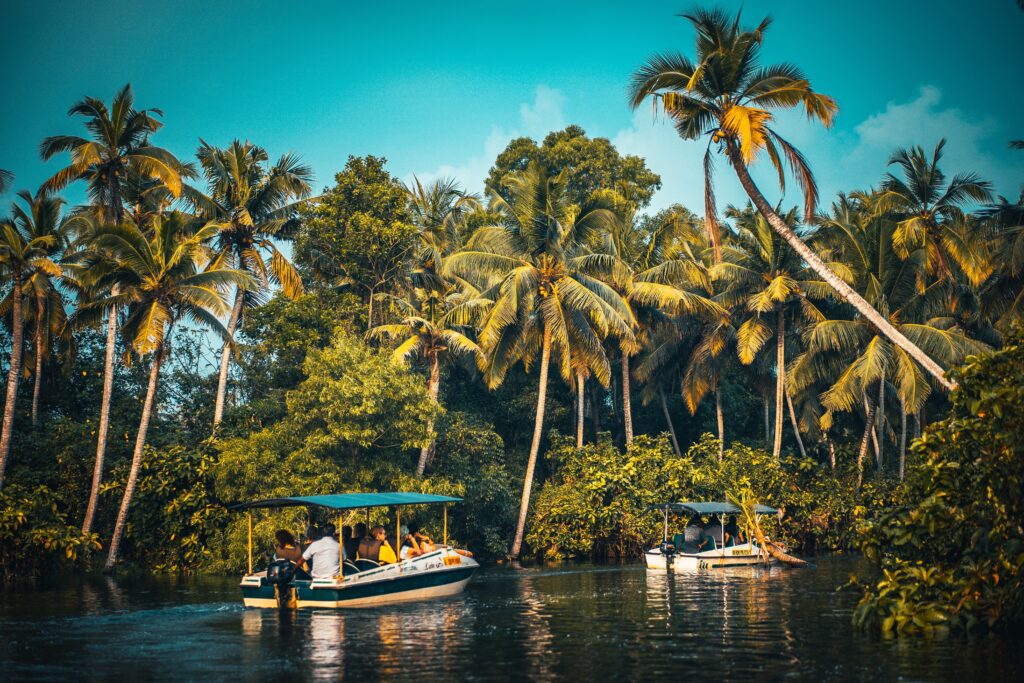
A visit to Baratang Island offers the ultimate tropical adventure. Imagine dense forests, vibrant tribal communities, winding mangroves, serene boat rides, pristine beaches, exotic birds, mysterious caves, trekking opportunities, and even an active mud volcano – all rolled into one destination. Although Baratang is rapidly gaining popularity as a tourist hotspot, it remains a remote getaway. Be prepared for limited telecom connectivity and a modest selection of restaurants and accommodations, making it a perfect escape for nature lovers and adventurers alike.
Government-maintained restrooms are the sole facilities available for travelers visiting Baratang Island. While options are limited, these restrooms are kept hygienic, ensuring a comfortable experience for visitors exploring this remote yet captivating destination.
Passing Through the Jarawa Tribe Reserve on Your Way to Baratang
While traveling to or from Baratang Island, you will pass through the Jarawa Tribe Reserve, situated between Jirkatang and Middle Strait. This reserve is managed by the government to protect the indigenous Jarawa tribes from diseases for which they lack natural immunity. The government also provides medical assistance to support their well-being.
Though you might catch a glimpse of the Jarawa tribes along the roadside, it’s important to note that this is not part of any sightseeing experience. Avoid falling for the misconception that tourists are taken to visit the Jarawas. Interacting with tribe members, offering them food, or photographing them is strictly prohibited and considered a punishable offense. Respect the privacy and dignity of these indigenous people while traveling through the reserve.
Convoy Through the Jarawa Tribal Reserve on the Way to Baratang
Traveling to Baratang Island involves passing through the Jarawa Tribal Reserve, an area dedicated to the protection of the indigenous Jarawa tribes. The journey is conducted in a regulated convoy system managed by the government to ensure the safety of both travelers and the tribes. This system helps minimize disturbances to the tribal habitat and prevents unauthorized interactions. As you pass through this reserve, adhere to the guidelines, respect the privacy of the Jarawa community, and avoid any prohibited activities, such as taking photos or offering food.
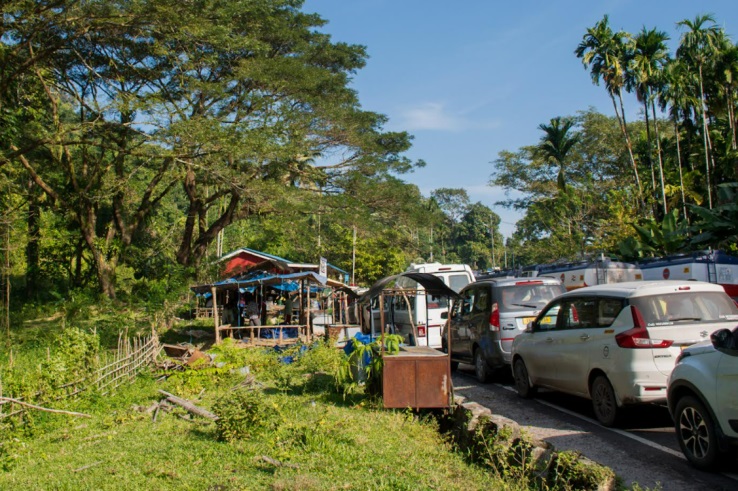
Important Tips for Traveling Through the Jarawa Tribal Reserve to Baratang
While crossing the Jarawa Tribal Reserve en route to Baratang Island, vehicles must adhere to a strict speed limit of 40 km/h to ensure safety and minimize disturbances. Visiting Baratang is a full-day excursion, so proper planning is essential. If you’re traveling from Port Blair, plan to stay there the night before and the night after your Baratang trip. Alternatively, you can head towards North Andaman for an overnight stay after completing your visit. To ensure a seamless experience, it’s recommended to plan your itinerary in advance before arriving in the Andaman Islands.
Journey to Baratang: Passing Through Scenic Forests and Historic Areas
Approximately 45-60 minutes after departing from Port Blair, you’ll leave behind the bustling city and journey through sparsely populated areas. The lush jungles flanking both sides of the road offer a mesmerizing view, making the drive a memorable part of your trip.
As you pass through Jirkatang, it’s worth noting the area’s history. A few decades ago, these regions were avoided due to occasional encounters with native tribes searching for food. However, the government has since taken significant steps to support and protect these indigenous communities. These efforts have led to a dramatic reduction in such incidents, ensuring safe passage for travelers while preserving the tribes’ well-being.
Regular Convoy Timings from Port Blair to Baratang Island
The convoys from Port Blair to Baratang Island operate at regular intervals throughout the day: 6 AM, 9 AM, 12 PM, and 3 PM. For the best experience, it is recommended that tourists choose the 6 AM or 9 AM convoys. These early departures allow you to enjoy a smoother journey and ensure you have ample time to explore Baratang’s attractions.
Pit Stop at Jirkatang Check Post on the Way to Baratang
Upon reaching the Jirkatang check post, vehicles will make a brief stop, allowing passengers to stretch and enjoy some refreshments. After this break, vehicles will proceed in groups of 7-10 at a time to cross the check post, ensuring a smooth and organized journey to Baratang Island.
Security and Restrictions While Crossing the Jarawa Tribe Reserve to Baratang
As you enter the Jarawa Tribe Reserve on your way to Baratang, security personnel armed with rifles will board the first and last vehicles in the convoy to ensure the safety of both travelers and the indigenous tribes. At this point, the driver may instruct you to turn off your mobile phones and cameras due to strict regulations prohibiting photography in the reserved areas. Remember, taking photos or interacting with the Jarawa tribes is a punishable offense, and these measures are in place to protect both the tribes and visitors.
Journey to Baratang Island via Nilambur Jetty
After crossing the Jarawa Tribe Reserve, you’ll arrive at Nilambur Jetty, where you’ll board a vehicle ferry for the next leg of your journey. These ferries are equipped to carry buses, trucks, cars, bikes, and passengers across the waters between Nilambur Jetty at Middle Strait and Baratang Island. The ferry ride offers a scenic and convenient way to reach Baratang, completing your adventure-filled journey.
Vehicle Ferry Crossing from Middle Strait to Baratang Island
The vehicle ferry crossing from Middle Strait to Baratang Island is a crucial part of the journey. This ferry transports vehicles such as buses, cars, trucks, and bikes, along with passengers, across the waters between Nilambur Jetty and Baratang. It provides a scenic and efficient way to continue your trip to this beautiful island.
Exploring the Limestone Caves and Mud Volcano at Baratang Island
Upon reaching Baratang Island, you can visit the famous Limestone Caves and Mud Volcano. To reach the Limestone Caves, take a 10-seater fiber boat from Baratang to the starting point of the trek. From there, you’ll embark on a 1.2 km trek to reach the caves. Along the way, you can hire a guide who will provide valuable insights into the cave formations and the unique shapes they have developed over the years, enriching your experience of this natural wonder.
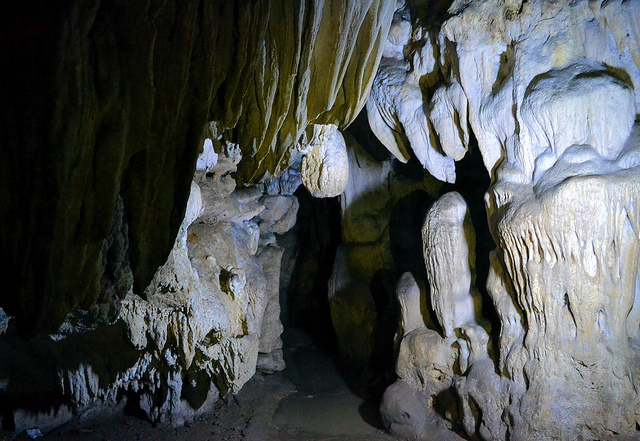
Limestone Caves: The Most Popular Attraction at Baratang Island
The Limestone Caves are Baratang Island’s most sought-after attraction, drawing visitors with their intriguing name and the promise of a unique adventure. Exploring a cave on a tropical island adds an exciting twist to any itinerary. These caves are adorned with stunning limestone formations that captivate visitors with their natural beauty. Inside the caves, the temperature is noticeably cooler than outside, creating a serene and comfortable environment to marvel at these geological wonders.
As one guide aptly said while exploring the Limestone Caves, “Your imagination will give these formations faces and names.” Isn’t that captivating? The caves, formed primarily of limestone made up of the mineral calcite (calcium carbonate), are a geological marvel. Limestone is highly soluble and dissolves easily over time. When rainwater absorbs carbon dioxide from the air, it forms a weak carbonic acid solution. This acidic water gradually dissolves the limestone, creating the mesmerizing caves that attract visitors from all over.
Mud Volcano: The Second Most Popular Attraction at Baratang Island
The Mud Volcano is the second most-visited attraction on Baratang Island and is a must-see for travelers. On a day trip to Baratang, you can conveniently explore both the Limestone Caves and the Mud Volcano, provided you stick to the schedule recommended by your tour organizer. Efficient time management is crucial to ensure you make the most of your visit and enjoy all the island’s natural wonders.
True to its name, the Mud Volcano at Baratang Island is a fascinating phenomenon where a mixture of mud, water, and gases erupts from the earth, resembling bubbling mud emerging from the ground. Did you know this is the only known mud volcano in India? That’s right! This rare natural wonder is still active, making it a unique attraction that draws visitors eager to witness its ongoing eruptions and geological significance.

Accommodation Options at Baratang Island
Dew Dale Resort Baratang
When it comes to accommodation on Baratang Island, the Dew Dale Resort stands out as the top choice in 2023. Known for its spacious and comfortable rooms, this resort offers the best amenities available on the island. It’s an ideal option for travelers seeking a relaxing stay while exploring Baratang’s attractions like the Limestone Caves and Mud Volcano.
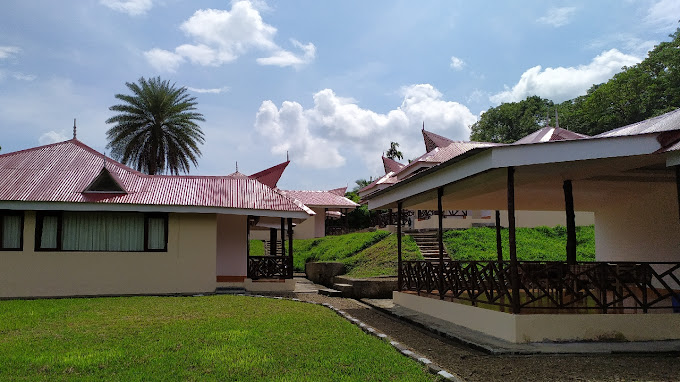
Baratang Island's Weather Overview
The Andaman and Nicobar Islands have a warm tropical climate, with pleasant weather year-round. Baratang Island experiences humidity and no winter season, while the monsoon lasts for up to 120 days, starting in late May. Rainfall varies from moderate to heavy. The region does not experience extreme hot summers or chilling winters, and there are no major issues like waterlogging or traffic jams during the monsoon. Any time of year is suitable for a vacation, with an average temperature of 25 to 27°C. Weather can be unpredictable, so travelers should check AccuWeather for the latest updates before visiting the Andaman Islands.
